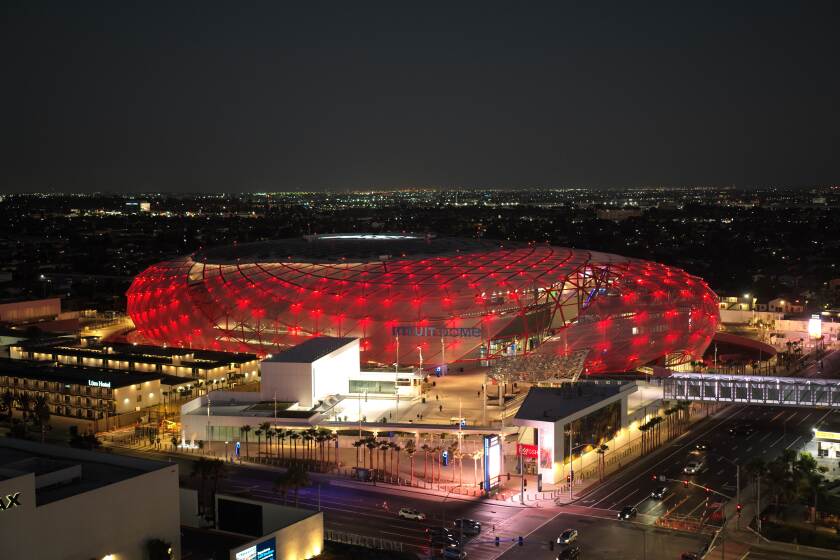Hollywood producer Denise Di Novi’s second act: Life as a painter
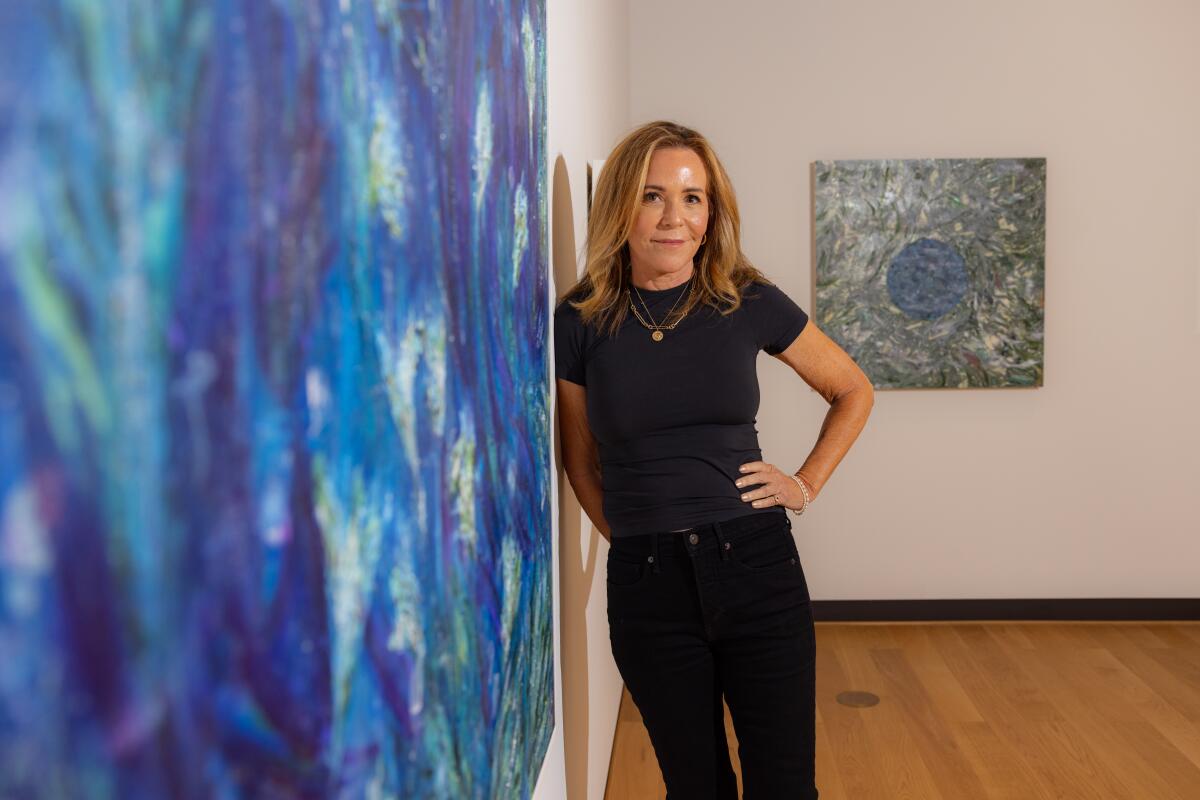
The woman who forged her path producing “Heathers,” “Edward Scissorhands” and “Beaches” turned to painting as a form of solace after her husband died. A new gallery show is part of that healing.
- Share via
In early 2020, Denise Di Novi — the producer of five Tim Burton classics, five film adaptations of Nicholas Sparks novels and two versions of “Little Women” — began an unexpected journey from Hollywood hitmaker to abstract expressionist painter.
The sudden death of Scott Farrow, her husband of five years, had Di Novi drowning in sorrow. Almost immediately after, COVID-19 virtually shut down the nation, and three days into the pandemic, Di Novi decided to put her feelings on paper.
“I was trying to keep my brain from exploding and the act of drawing connected me to something else beside the panic and shock,” she recalls. “I felt I had to do it, like this was a place for both my love for my husband and for my grief to go.”
The Norton Simon in Pasadena may get overshadowed by LACMA, MOCA and the Broad, but its 12,000-piece collection is one of SoCal’s best. Our critic offers a shortlist of don’t-miss works.
She quickly moved on to paint, letting her emotions out in a flood of color and movement and slathering her canvases with texture. “There could be 10 to 12 layers of paint and then I destroy a lot of it with knives and scrapers,” she says. “It’s a physical and emotional release. I feel anger, I feel joy. I feel peace. And it connects me to the beauty in life.”
Now Di Novi has her debut exhibition running through Sept. 14 at the Honarkar Foundation in Laguna Beach. Di Novi is giving all of her portion of the sales to the Selah Carefarm, a grief therapy center she attended in Arizona.
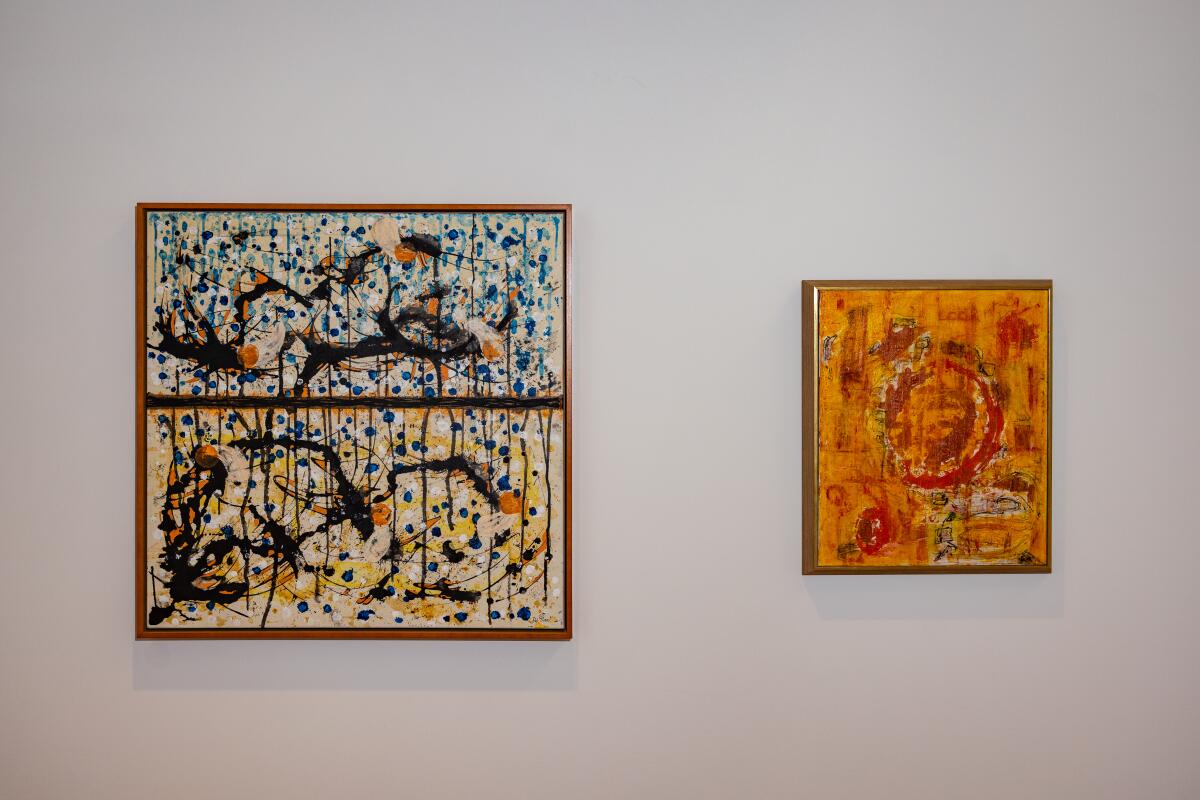
The art on view defies quick categorization. Some works reference to the Earth, the sun, the sea, underwater flora, windows and doors, but her style is rooted in the improvisational abandonment, vigorous physicality and visceral power of 1950s abstract painting. Much of her work, she says, depicts an otherworldliness, a pulling back of the veil between this life and the hereafter.
At a preview walk-through of the show, Di Novi shudders slightly at a work entitled “Self Portrait.” Painting it was, she says, “a very weird cathartic experience for me and seeing it freaks me out a little.” She moves on, tenderly tracing her fingers across the textures of her paintings as if they were still-healing scars.
“I feel like my painting is becoming an expression of not only what I’ve been through but also who I am now,” she declares.
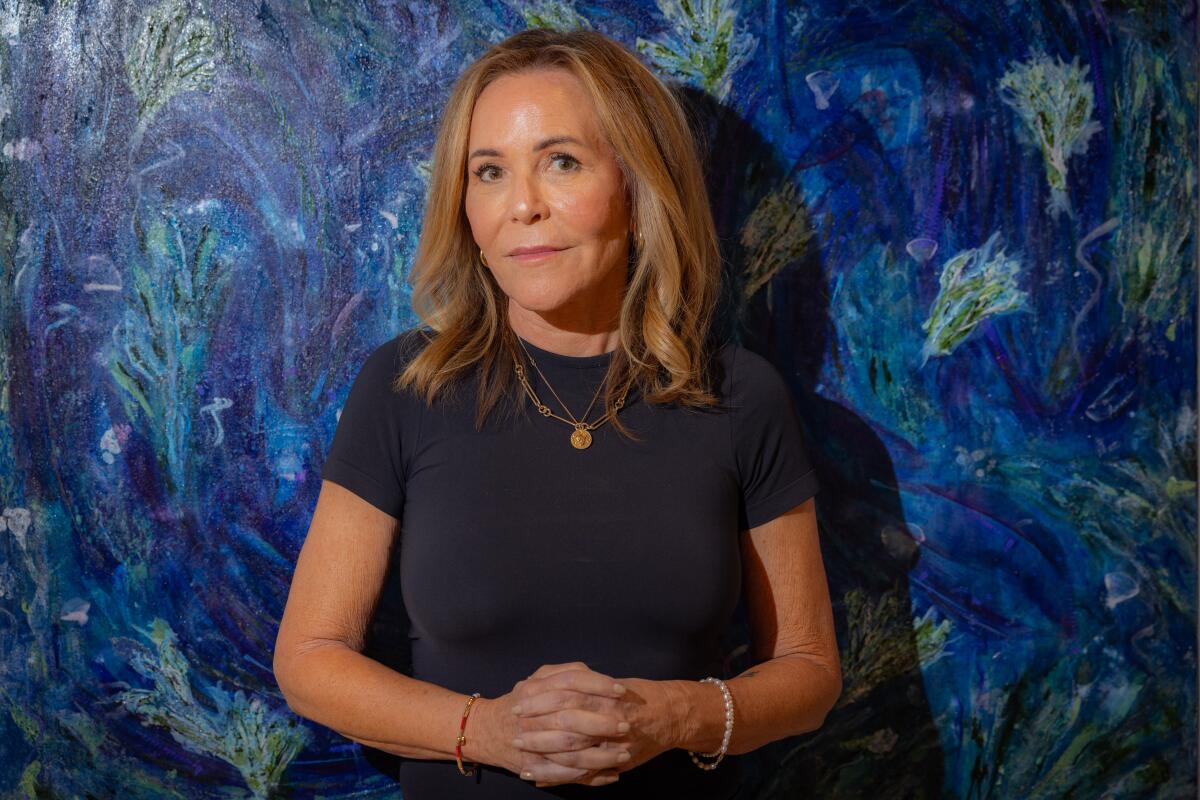
Intuit Dome is a sleek, joyous piece of modern architecture with much to love, just like its neighbor, SoFi Stadium. But around its edges, the picture gets a little fuzzier.
Filmmaking is about telling stories. What stories do your paintings tell?
I’m inspired by any story where creating something saves someone’s life. Painting saved mine. These paintings tell the stories of my survival and my gratitude for being alive. I hope they inspire people who are suffering with grief and help people see that you can do more than one thing in life if you allow yourself to be vulnerable and to grow.
Growing up, what was your experience with art?
My parents lived and breathed creativity. My mother was a dancer, and my father is a jazz musician. He’s 96 and still playing clubs. In school, I loved painting trees, but I made all the leaves every color. My teacher said, “Paint a tree with green leaves.” I tried and it was ugly. So, I thought I must be a bad artist. Then I turned my creativity to movies.
You’ve produced dozens of movies, including “Heathers” and “Crazy, Stupid, Love,” and also directed for film and television. What makes painting different?
Filmmaking is collaborative. What’s liberating about painting is that it’s singular and solitary, a direct chain from my brain and heart and soul. I don’t know what I’m doing; it’s just intuitive. When I’m painting, I’m constantly trying to see and to capture what cannot be seen.
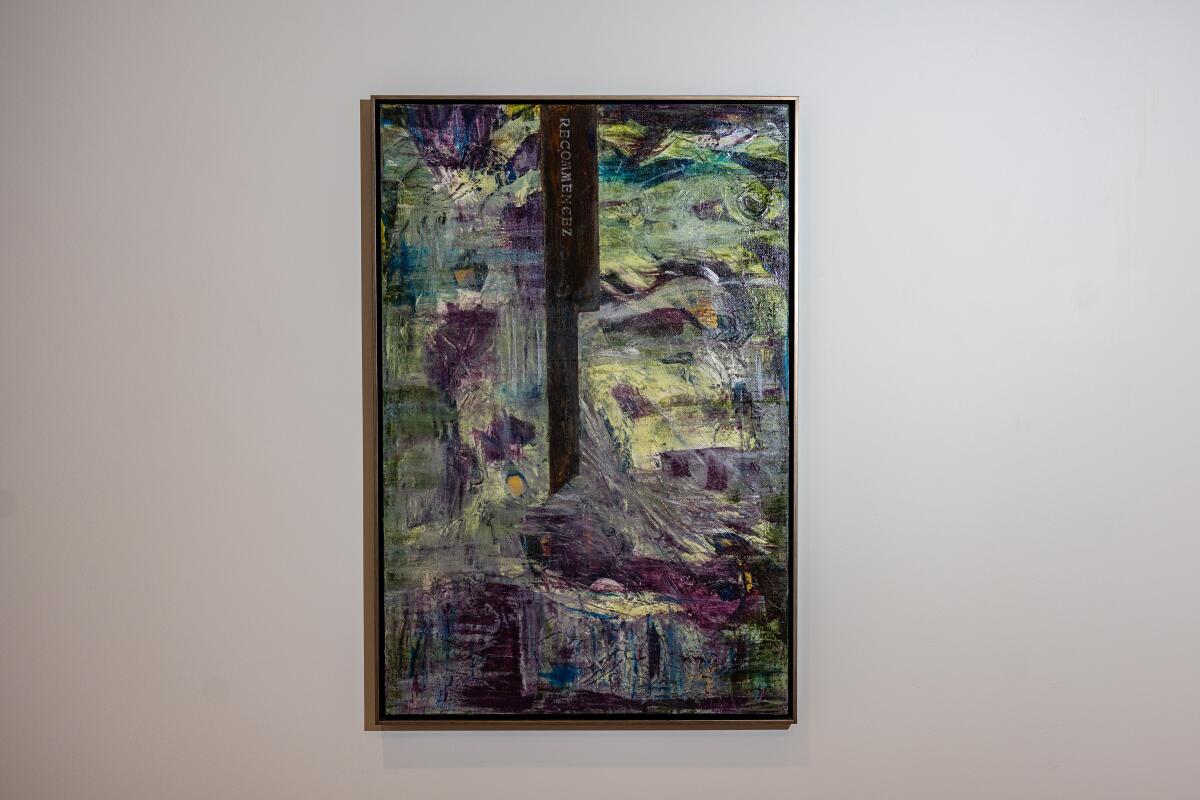
What artists do you admire?
At 21, I visited the Marc Chagall National Museum in Nice [France] and I bought the poster of “Adam and Eve Expelled From Paradise.” I connected to his spirituality and because he synthesized so many styles and ideas, his work seemed so free and innocent. I love Mark Rothko, Jackson Pollock, Banksy and Jean-Michel Basquiat. I do lean toward female painters though, for the same reason. I try to make female-centered movies. There is not enough of the female experience in art and film.
Who are your favorite female painters?
Georgia O’Keeffe’s painted flowers and skulls that are so female, they’re actually racy. My favorite artist is Joan Mitchell. She was part of the group of postwar artists — Helen Frankenthaler, Lee Krasner, Grace Hartigan and Elaine de Kooning — written about in the book “Ninth Street Women,” which details how abstract expressionism was born in this country and how women were a crucial part of it.
What are your studio rituals?
I’m a very organized person and I used to see messy artist studios and think, “How could they live like such a crazy person?” But now I can’t paint unless my rags and brushes are strewn around me so I can just grab them. I like to paint early in the morning or at night when I can’t be pulled away. I meditate before I start, and I cannot move my hand to paint without music: Keith Jarrett’s “The Köln Concert,” Mozart and Beethoven, Brandi Carlile and Joni Mitchell.
Last question: Why do you incorporate text in your work?
Sometimes, a word will come into my mind, and I feel compelled to put it in on the canvas. “Look to the Sun” has the word “look” painted in it. Everyone says don’t look at the sun because you’ll go blind. It shows my rebelliousness, “Life, you are not going to get me down. I am going to look at the sun.”
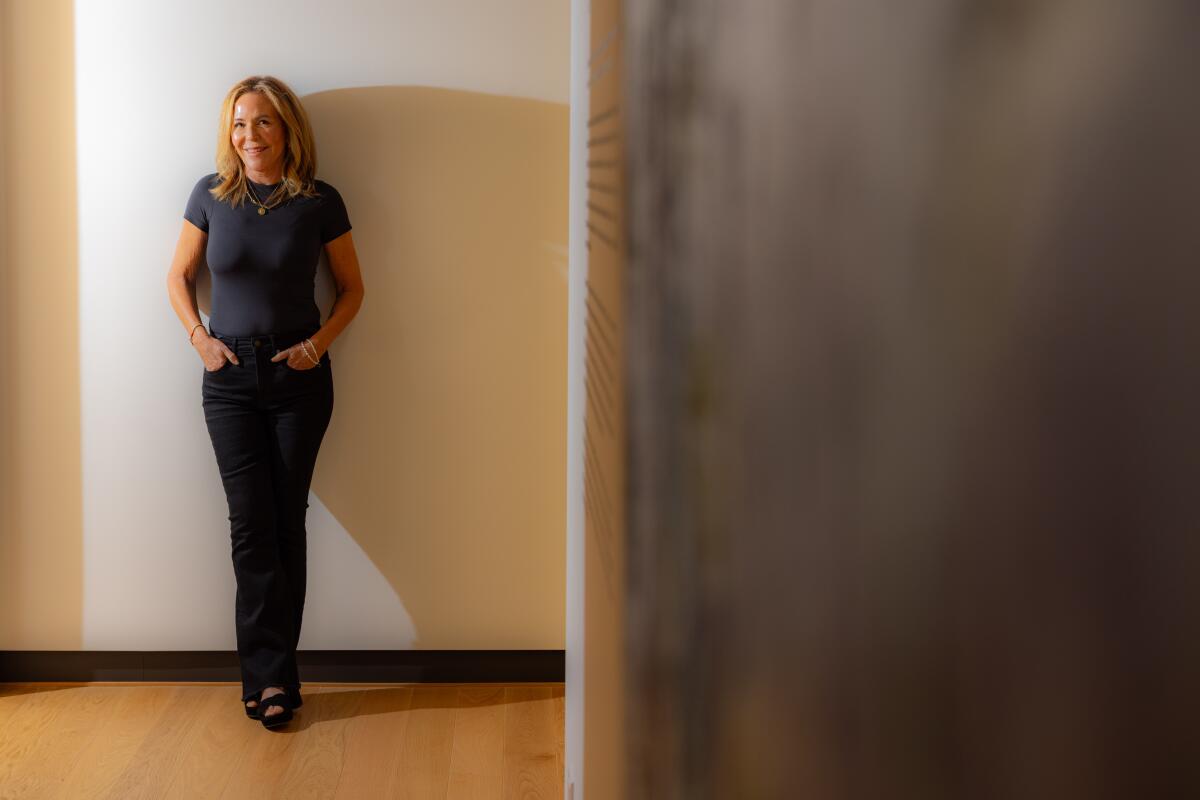
More to Read
The biggest entertainment stories
Get our big stories about Hollywood, film, television, music, arts, culture and more right in your inbox as soon as they publish.
You may occasionally receive promotional content from the Los Angeles Times.

